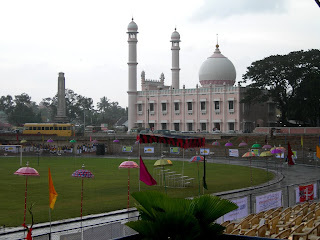 This is the classical bonsai subject in Japan — and the world over, for that matter. Pines make erect growing, stately trees, with powerful and tall trunks that often have bark flaking off in solid plates. Pines are found throughout the Northern Hemisphere, usually in arid and mountainous places. There are many other trees with the word ‘pine’ in their names that are not Pines at all, and this can make identification and selection confusing at times.
This is the classical bonsai subject in Japan — and the world over, for that matter. Pines make erect growing, stately trees, with powerful and tall trunks that often have bark flaking off in solid plates. Pines are found throughout the Northern Hemisphere, usually in arid and mountainous places. There are many other trees with the word ‘pine’ in their names that are not Pines at all, and this can make identification and selection confusing at times.
Pine foliage is in the form of needles. Usually these are in bundles of twos or fives, and although some species have bundles of just one, three or even four, these are not often found in bonsai. Some Pines have needles that are very long or that are curved; neither characteristic makes them suitable for bonsai. Colour varies quite considerably.
There is an extensive production industry in Japan for producing cheap but quality embryo Pine bonsai material in a host of styles. If such quality material at low prices were available elsewhere, the interest in bonsai could soar. Unfortunately there are restrictions on importing Pines into Great Britain directly from Japan, but they can be brought in via continental Europe after being quarantined and certified as healthy
bonsai styles and presentation
Pines can be made into all of the bonsai styles. They are most commonly seen as formal trees, and often boring ones at that. They are usually displayed in winter, and be fore doing so it is not uncommon to discretely wire every branch and twig to get almost every needle into its optimum position.
Sometimes Pines may be seen on display after having had their needles reduced in size with shears, but this distracts from the beauty of the tree because the cut ends turn brown. Really good specimens will have noticeably thick and ridged bark.
Impressive Pine bonsai needs to be planted in deep pots commensurate with their stature, and deep, earthy colours are usually used. White pines, which are lighter in appearance, may be housed in lightly glazed and less powerful-looking pots.
Species and varieties
There are three species extensively used for Pine bonsai in Japan. These are the Japan ese black pine (P. thunbergii), Japanese red pine (P. densiflora) and Japanese white pine (P. parviflora). The native two-needled Scots or Scotch pine (P. sylvestris) and its dwarf forms, ‘Nana’, ‘Beuvronensis’ and ‘Watereri’
are extensively used as alternatives to the Japanese black. The dwarf Mountain or Swiss pine (P. mugo) is also very popular and quite ideal for bonsai. Much of it is propagated for garden use, so it is readily and cheaply available.
Care
Pines only need infrequent repotting. When they are very old — well over 100 — repotting may need to be done only every 10 to 15 years. Meticulous care needs to be paid to keeping needles short by removing the buds, and to shortening the candles. Timing is criti cal here and more has been written on this subject than any other in bonsai.
Pines should be kept on the dry side for most of the year, and at the time of spring growth water needs to be withheld to help keep needles short. They should be planted in very well-draining soil






